ناموجود
EBV Real-TM Quant Real-TM, sacace -50t
Sacace™ EBV Real-TM Quant VER 05.05.2022 IVD For in Vitro Diagnostic Use EBV Real-TM Quant Handbook Real Time PCR Kit for quantitative detection of Epstein Barr Virus (EBV) REF V9-50FRT REF V9-100FRT Sacace™ EBV Real-TM Quant VER 05.05.2022 NAME EBV Real-TM Quant INTRODUCTION EBV is a DNA virus member of herpes family and known to cause mononucleosis. The more severe, albeit rare, result of EBV infection is malignant transformation and cancer development in various forms, including Burkitt’s lymphoma and nasopharyngeal carcinoma, one of the most common cancers in China. Burkitt’s lymphoma (BL) is a malignant form of tumor associated with EBV that is endemic to central parts of Africa and New Guinea with an annual incidence of 6–7 cases per 100 000 and a peak incidence at 6 or 7 years of age. The epidemiological involvement of EBV in Burkitt’s lymphoma is based on the recognition of the EBV viral genome in tumor cells, associated with an elevated antibody titre against EBV viral capsid antigen (VCA). The primary site of Epstein-Barr virus (EBV) infection is the oropharyngeal cavity. Children and teenagers are commonly afflicted usually after oral contact, hence the name “kissing disease”. Based on serology, about 95% of the world adult population has been infected with EBV and, following primary infection, remains lifelong carriers of the virus. EBV infects resting human Blymphocytes and epithelial cells, multiplies in the latter and establishes latent infection in memory B-lymphocytes. Recent studies have shown that EBV also is associated with B-cell malignancies such as Hodgkin’s lymphoma (HL) and lymphoproliferative disease in immunosuppressed patients, as well as with some T-cell lymphomas and other epithelial tumors such as gastric cancers. These tumors are characterized by the presence of multiple extrachromosomal copies of the viral genome in tumor cells and the expression of part of the EBV genome. INTENDED USE EBV Real-TM Quant kit is a Real-Time test for the Qualitative and Quantitative detection of Epstein Barr Virus. Sacace™ EBV Real-TM Quant VER 05.05.2022 PRINCIPLE OF ASSAY EBV Real-TM Quant kit is a Real-Time test for the Qualitative and Quantitative detection of Epstein Barr Virus in the biological materials. DNA is extracted from samples, amplified and detected using fluorescent reporter dye probes specific for EBV DNA, Internal Control IC and endogenous IC glob (-globine gene). -globin gene DNA is a part of human genome DNA and it should be present in an adequate amount in DNA sample, obtained from the cells. There must be no less than 20 000 genomes per sample (DNA from 10 000 cells). Internal Control (IC), added during the sample preparation from plasma, liquor, amniotic liquid, sputum, bronchial lavages and other cell free or low in DNA content materials, serves as an amplification control for each individually processed specimen and to identify possible reaction inhibition, while endogenous IC (-globine gene), present in all samples obtained from cells (whole blood, leucocytes, biopsy and autopsy material, saliva, swabs) allows not only to control analysis steps, but also to estimate sample handling and storage. EBV LMP-gene DNA amplification is detected on JOE(Yellow)/HEX/Cy3 channel, the IC glob (- globin gene) DNA amplification is detected on FAM (Green) channel and exogenous Internal Control IC is detected on Rox (Orange)/TexasRed channel. MATERIALS PROVIDED Contents Ref. V9-50FRT 50 reactions Ref. V9-100FRT 100 reactions EBV Real-TM Quant: Real Time amplification PCR-mix-1 0,6 ml 2 x 0,6 ml PCR-buffer FRT 0,3 ml 2 x 0,3 ml Hot Start DNA Polymerase 0,03 ml 2 x 0,03 ml TE-buffer 0,5 ml 0,5 ml Negative Control C-* 1,2 ml 1,2 ml EBV DNA&IC Glob C+** 0,1 ml 2 x 0,1 ml Internal Control IC*** 0,6 ml 2 x 0,6 ml Standard EBV DNA/IC glob o QSG1 0,1 ml 0,2 ml o QSG2 0,1 ml 0,2 ml * must be used during the sample preparation procedure: add 100 µl of C– (Negative Control) to labeled Cneg; ** add 90 µl of C– (Negative Control) and 10 µl of EBV DNA&IC Glob C+ to the tube labeled Cpos *** add 10 µl of Internal Control to all samples during the DNA isolation procedure directly to the sample/lysis mixture Sacace™ EBV Real-TM Quant VER 05.05.2022 MATERIALS REQUIRED BUT NOT PROVIDED Desktop microcentrifuge for “eppendorf” type tubes Vortex mixer Disposable gloves, powderless Biohazard waste container Refrigerator, Freezer Real Time Thermal cycler Workstation Pipettes (adjustable) Sterile pipette tips with filters STORAGE INSTRUCTIONS EBV Real-TM Quant must be stored at -20°C. The EBV Real-TM Quant kit can be shipped at 2-8°C but should be immediately stored at -20°C on receipt. STABILITY EBV Real-TM Quant Test is stable up to the expiration date indicated on the kit label. The product will maintain performance through the control date printed on the label. Exposure to light, heat or humidity may affect the shelf life of some of the kit components and should be avoided. Repeated thawing and freezing of these reagents should be avoided, as this may reduce the sensitivity. QUALITY CONTROL In accordance with Sacace’s ISO 13485-Certified Quality Management System, each lot is tested against predetermined specifications to ensure consistent product quality. Sacace™ EBV Real-TM Quant VER 05.05.2022 WARNINGS AND PRECAUTIONS In Vitro Diagnostic Medical Device For In Vitro Diagnostic Use Only The user should always pay attention to the following: Use sterile pipette tips with aerosol barriers and use new tip for every procedure. Store extracted positive material (samples, controls and amplicons) away from all other reagents and add it to the reaction mix in a separate area. Thaw all components thoroughly at room temperature before starting an assay. When thawed, mix the components and centrifuge briefly. Use disposable gloves, laboratory coats and eye protection when handling specimens and reagents. Thoroughly wash hands afterwards. Do not eat, drink, smoke, apply cosmetics, or handle contact lenses in laboratory work areas. Do not use a kit after its expiration date. Dispose of all specimens and unused reagents in accordance with local authorities’ regulations. Specimens should be considered potentially infectious and handled in a biological cabinet in accordance with appropriate biosafety practices. Clean and disinfect all sample or reagent spills using a disinfectant such as 0.5% sodium hypochlorite, or other suitable disinfectant. Avoid sample or reagent contact with the skin, eyes, and mucous membranes. If skin, eyes, or mucous membranes come into contact, rinse immediately with water and seek medical advice immediately. Material Safety Data Sheets (MSDS) are available on request. Use of this product should be limited to personnel trained in the techniques of DNA amplification. The laboratory process must be one-directional, it should begin in the Extraction Area and then move to the Amplification and Detection Areas. Do not return samples, equipment and reagents to the area in which the previous step was performed. Sacace™ EBV Real-TM Quant VER 05.05.2022 PRODUCT USE LIMITATIONS All reagents may exclusively be used in in vitro diagnostics. Use of this product should be limited to personnel trained in the techniques of DNA amplification (UNI EN ISO 18113-2:2012). Strict compliance with the user manual is required for optimal PCR results. Attention should be paid to expiration dates printed on the box and labels of all components. Do not use a kit after its expiration date. SAMPLE COLLECTION, STORAGE AND TRANSPORT EBV Real-TM Quant can analyze DNA extracted from: whole blood; buffy coat; tissue; urine (sediment); swabs; sputum; plasma; liquor; Specimens can be stored at +2-8°C for no longer than 12 hours, or freeze at -20°C to -80°C. Transportation of clinical specimens must comply with country, federal, state and local regulations for the transport of etiologic agents. DNA ISOLATION Any commercial RNA/DNA isolation kit, if IVD-CE validated for the specimen types indicated herein at the “SAMPLE COLLECTION, STORAGE AND TRANSPORT” paragraph, could be used. Sacace Biotechnologies recommends to use the following kits: DNA-Sorb-B (Sacace, REF K-1-1/B); Ribo Virus 50– spin column extraction kit (Sacace, REF K-2-C); SaMag Viral Nucleic Acids Extraction kit (Sacace, REF SM003) for plasma, liquor; SaMag STD DNA Extraction kit (Sacace, REF SM007) for urine sediment, swabs. Please carry out the DNA extraction according to the manufacturer’s instructions. Sacace™ EBV Real-TM Quant VER 05.05.2022 PROTOCOL: 1. Prepare required quantity of tubes or PCR plate. 2. Prepare for each sample in the new sterile tube 10*N µl of PCR-mix-1, 5*N µl of PCR-mix-2 buffer and 0,5*N µl of Hot Start DNA Polymerase. 3. Add 15 µl of Reaction Mix into each tube. 4. Add 10 µl of extracted DNA sample to appropriate tube with Reaction Mix. 5. Prepare for qualitative run 1 positive control and 1 negative control: add 10 µl of QS2 to the tube labeled Cpos; add 10 µl of TE-buffer to the tube labeled Cneg; 6. For quantitative analysis prepare 4 tubes and perform QS1 and QS2 standards twice. Close tubes and transfer them into the instrument in this order: samples, negative controls, positive control, Standards. Create a temperature profile on your Real-time instrument as follows: Rotor type instruments1 Plate type or modular instruments2 Stage Тemp, °С Time Fluorescence detection Cycle repeats Тemp, °С Time Fluorescence detection Cycle repeats Hold 95 15 min – 1 95 15 min – 1 Cycling 95 5 s – 5 95 5 s – 60 20 s – 60 20 s – 5 72 15 s – 72 15 s – Cycling 2 95 5 s – 40 95 5 s – 60 20 s 40 FAM(Green), JOE(Yellow), Rox (Orange) 60 30 s FAM, JOE/HEX/Cy3, Rox/TexasRed 72 15 s – 72 15 s _ 1 For example Rotor-Gene™ 3000/6000/Q (Corbett Research, Qiagen) 2 For example, SaCycler-96™ (Sacace), CFX96TM/iQ5™ (BioRad); Mx3005P™ / Mx3000P™ (Agilent), ABI® 7300/7500/StepOne Real Time PCR (Applied Biosystems), SmartCycler® (Cepheid) RESULTS INTERPRETATION The results are interpreted through the presence of crossing of fluorescence curve with the threshold line. To set threshold put the line at such level where curves of fluorescence are linear. EBV LMP-gene DNA amplification is detected on JOE(Yellow)/HEX/Cy3 channel; IC glob (-globin gene) DNA amplification is detected on FAM (Green) channel (only for the total DNA extraction from cell suspension (whole blood, leucocytes, biopsy and autopsy material, swabs) Exogenous Internal Control IC is detected on Rox (Orange)/TexasRed channel. Sacace™ EBV Real-TM Quant VER 05.05.2022 Qualitative analysis Results are accepted as relevant if positive and negative controls of amplification and extraction are passed. Results for controls Control Stage for control Ct FAM (Green) Ct JOE(Yellow)/HEX/Cy3 Ct Rox (Orange)/TexasRed Interpretation C- DNA isolation _ _ Pos (<30) OK EBV C+ DNA isolation, PCR Pos (<25) Pos (<30) Pos (<30) OK TE-buffer PCR _ _ _ OK QS2 PCR Pos (<31) Pos (<31) Pos (<31) OK The sample is considered to be positive for EBV if in the channel JOE(Yellow)/HEX/Cy3 the value of Ct is different from zero (Ct<35); The sample is considered to be uncertain for EBV if its Ct value is more than 35 on JOE(Yellow)/HEX/Cy3 channel. Additional double study of this sample should be conducted; Specimens with Ct < 33 in the channel FAM (Green) (only for cell suspension), Ct < 33 in the channel Rox (Orange)/TexasRed and absent fluorescence signal in the channel JOE(Yellow)/HEX/Cy3 are interpreted as negative. Specimens with absent signal in the FAM (Green) (only for cell suspension) and Rox (Orange)/TexasRed are interpreted as invalid. Sacace™ EBV Real-TM Quant VER 05.05.2022 Quantitative analysis of samples extracted from cell suspension (whole blood, leucocytes, biopsy and autopsy material, swabs) For each control and patient specimen, calculate the concentration of EBV DNA in 105 cells using the following formula: EBV DNA copies/reaction (JOE(Yellow)/HEX/Cy3 channel) x 2*105 = copies EBV DNA/105 cells IC Glob DNA copies/reaction (FAM (Green) channel) For each control and patient specimen, calculate the concentration in logarithms of EBV DNA in 105 cells using the following formula: log [EBV DNA copies/ IC Glob DNA copies x 2*105 ] = log (copies EBV DNA/105 cells) The results can be calculated manually or using Excel tables. To do this copy the names of the samples and insert them in the first column (Column A). Copy the concentrations of EBV DNA from the channel Joe(Yellow)/HEX/Cy3 and paste in the second column of Excel table (Column B). Copy the concentrations of IC Glob from the channel Fam(Green) and paste in the third column of Excel table (Column C). Insert in the column D the formula D=LOG (B/C*200000): log values will appear. In E column put the formula E=B/C*200000: the values in copies/105 cells will appear. Name Calc Conc (copies/reaction) Joe(Yellow)/HEX/Cy3 Calc Conc (copies/reaction) Fam(Green) Log EBV/105 copies EBV/105 A B C D E 1 8742 125640 4,1 13916 2 253 87787 2,8 576 3 65765 4 648 16354 3,9 7925 5 76865 QS1 9962 9793 QS1 10011 10143 QS2 98 103 QS2 102 97 Neg PCR Sacace™ EBV Real-TM Quant VER 05.05.2022 Quantitative analysis of samples extracted from plasma, liquor, amniotic liquid, bronchial lavage, swabs For each control and patient specimen, calculate the concentration of EBV DNA/ml using the following formula: EBV DNA copies/reaction (JOE(Yellow)/HEX/Cy3 channel) x IC coefficient* = copies EBV/ml IC DNA copies/reaction (Rox(Orange)/TexasRed channel) *coefficient is specific for each lot and reported in the EBV TM Quant Data Card provided in the kit. The results can be calculated manually or using Excel tables. To do this copy the names of the samples and insert them in the first column (Column A). Copy the concentrations of EBV DNA from the channel Joe(Yellow)/HEX/Cy3 and paste in the second column of Excel table (Column B). Copy the concentrations of IC DNA from the channel Rox(Orange)/TexasRed and paste in the third column of Excel table (Column C). Insert in the column D the value of IC coefficient reported in the EBV Data Card (value is specific for each lot). In E column put the formula =B3/C3*D3: the values in copies/ml will appear. Name Calc Conc (copies/reaction) Joe(Yellow)/HEX/Cy3 Calc Conc (copies/reaction) Rox(Orange)/Texas Red lC coefficient Copies EBV DNA/ml A B CD E 1 85 1138 14000 1045 2 56 1076 14000 728 3 1288 14000 4 25 1012 14000 345 5 1184 14000 QS1 10210 10103 QS1 9876 9964 QS2 98 99 QS2 102 104 Neg PCR Sacace™ EBV Real-TM Quant VER 05.05.2022 PERFORMANCE CHARACTERISTICS Analytical specificity The analytical specificity of the primers and probes was validated with negative samples. They did not generate any signal with the specific EBV primers and probes. The specificity of the kit EBV Real – TM Quant was 100%. The potential cross-reactivity of the kit EBV Real – TM Quant was tested against the group control (CMV, HSV 1 & 2, HHV6, HHV8, VZV, Parvovirus and other ones). It was not observed any cross-reactivity with other pathogens. Analytical sensitivity The kit EBV Real – TM Quant allows to detect EBV DNA in 100% of the tests with a sensitivity of not less than 200 copies/ml or 5 copies of EBV DNA per 105 cells. The linear range of EBV Real – TM Quant PCR kit is 500-10.000.000 EBV DNA copies/ml. If the result is less than 500 copies/ml, the results should be indicated as “less than 500 EBV copies/ml”. Target region: LMP-gene Sacace™ EBV Real-TM Quant VER 05.05.2022 TROUBLESHOOTING 1. Weak or no signal of the IC (Rox (Orange)/TexasRed channel). The PCR was inhibited. Make sure that you use a recommended DNA extraction method and follow to the manufacturer’s instructions. Re-centrifuge all the tubes before pipetting of the extracted DNA for 2 min at maximum speed (12000-16000 g) and take carefully supernatant. Don’t disturb the pellet, sorbent inhibit reaction. The reagents storage conditions didn’t comply with the instructions. Check the storage conditions The PCR conditions didn’t comply with the instructions. Check the PCR conditions and select for the IC detection the fluorescence channel reported in the protocol. 2. Weak or no signal of the Positive Control. The PCR conditions didn’t comply with the instructions. Check the amplification protocol and select the fluorescence channel reported in the manual. 3. JOE(Yellow)/HEX/Cy3 or Fam(Green) signal with Negative Control of extraction. Contamination during DNA extraction procedure. All samples results are invalid. Decontaminate all surfaces and instruments with sodium hypochlorite and ethanol. Use only filter tips during the extraction procedure. Change tips between tubes. Repeat the DNA extraction with the new set of reagents. 4. Any signal with Negative Control of PCR (DNA-buffer). Contamination during PCR preparation procedure. All samples results are invalid. Decontaminate all surfaces and instruments with sodium hypochlorite and ethanol or special DNA decontamination reagents. Repeat the PCR preparation with the new set of reagents. Sacace™ EBV Real-TM Quant VER 05.05.2022 KEY TO SYMBOLS USED * SaCycler™ is a registered trademark of Sacace Biotechnologies * CFX96™ and iQ5™ are registered trademarks of Bio-Rad Laboratories * Rotor-Gene™ is a registered trademark of Qiagen * MX3005P® is a registered trademark of Agilent Technologies * ABI® is a registered trademark of Applied Biosystems * SmartCycler® is a registered trademark of Cepheid Sacace Biotechnologies Srl via Scalabrini, 44 – 22100 – Como – Italy Tel +390314892927 Fax +390314892926 mail: info@sacace.com web: www.sacace.com List Number Caution! Lot Number Contains sufficient for tests For in Vitro Diagnostic Use Version Store at NCA Negative Control of Amplification Manufacturer NCE Negative control of Extraction Consult instructions for use C+ Positive Control of Amplification Expiration Date IC Internal Control
حمل و نقل کالا
درخواست محصول
.فقط مشتریانی که این محصول را خریداری کرده اند و وارد سیستم شده اند میتوانند برای این محصول دیدگاه(نظر) ارسال کنند.
محصولات پیشنهادی
Sinapure-DNA (Cell culture, Tissues, Gram negative Bacteria and CSF)50t – PR881613-EX6011
امتیاز 0 از 5











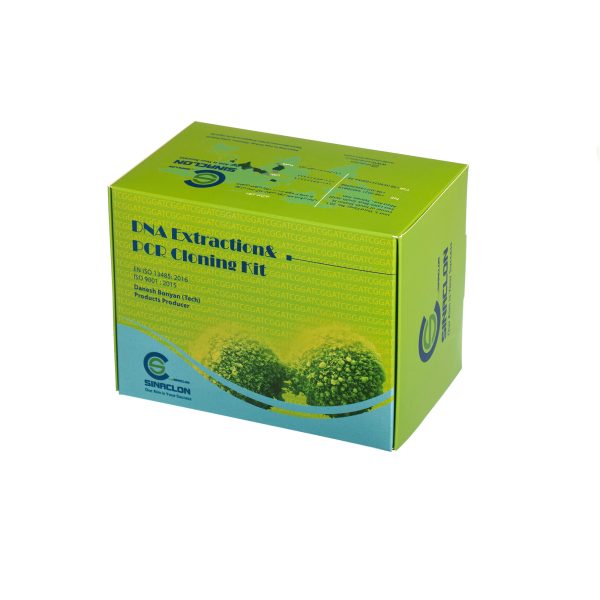
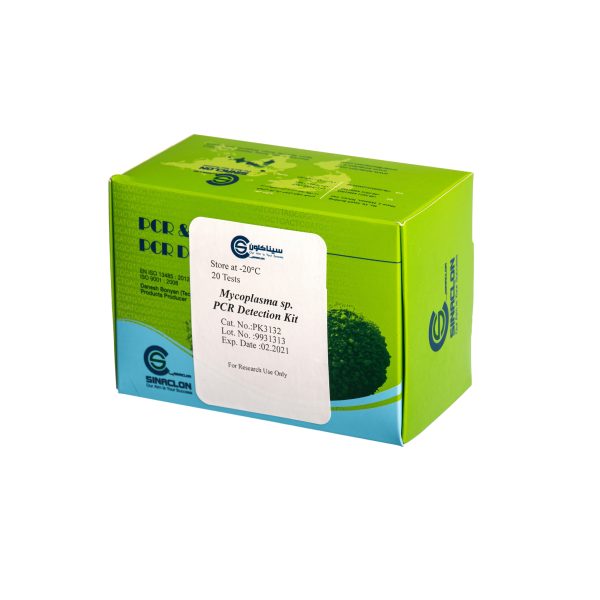
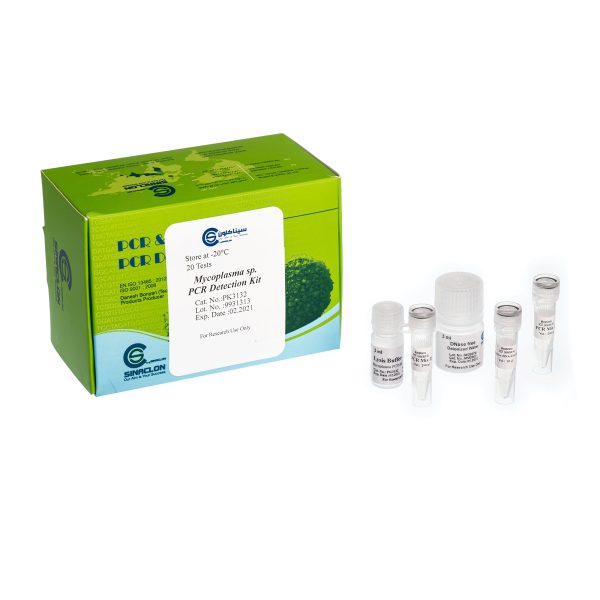
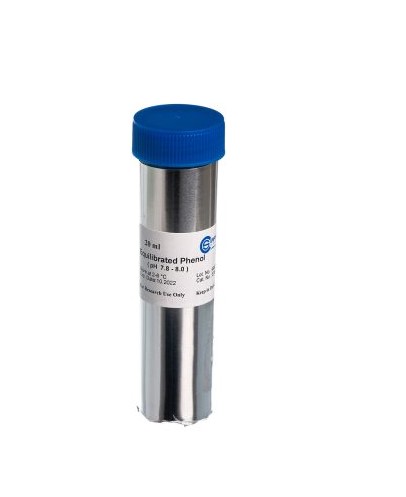
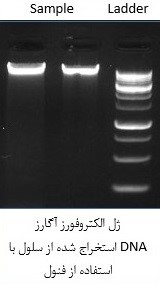
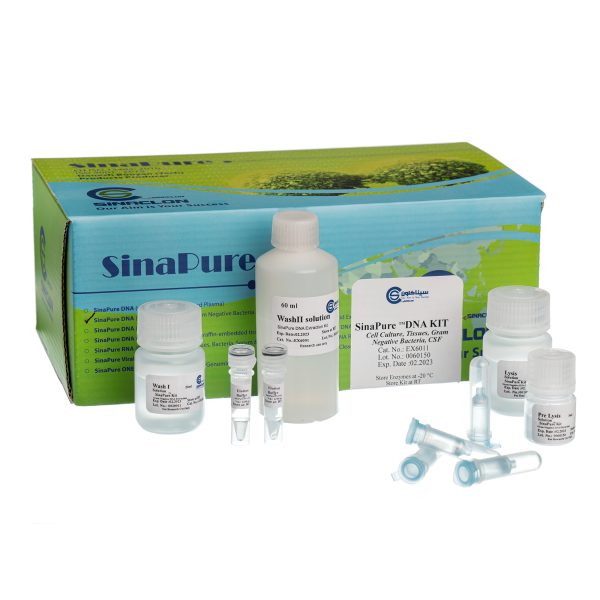
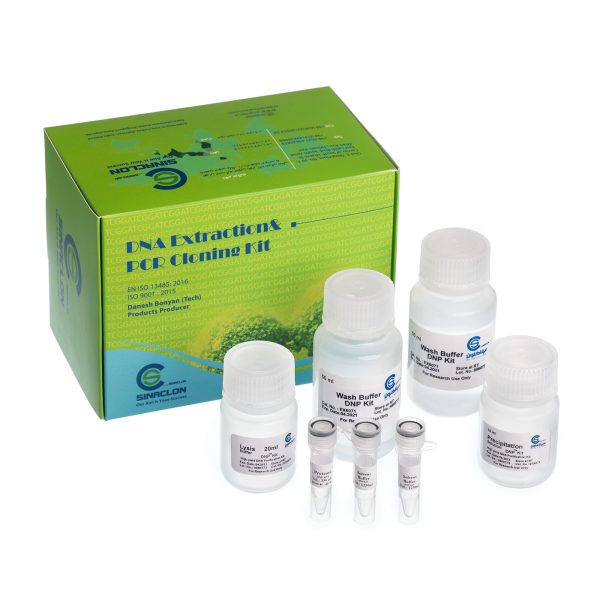
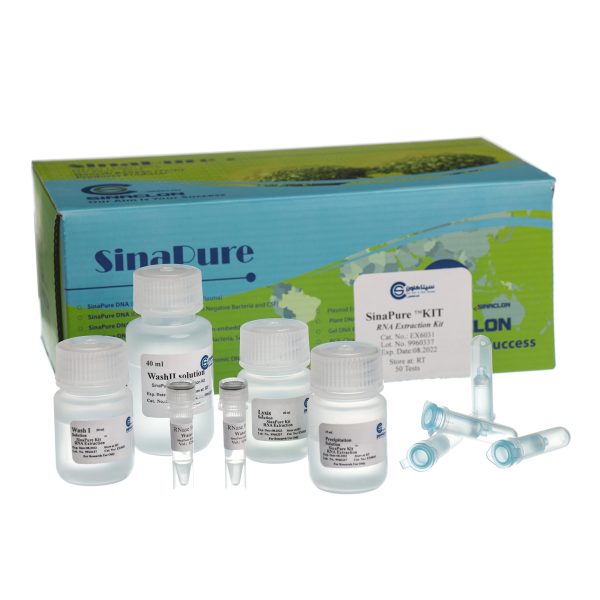
نقد و بررسیها
هنوز بررسیای ثبت نشده است.